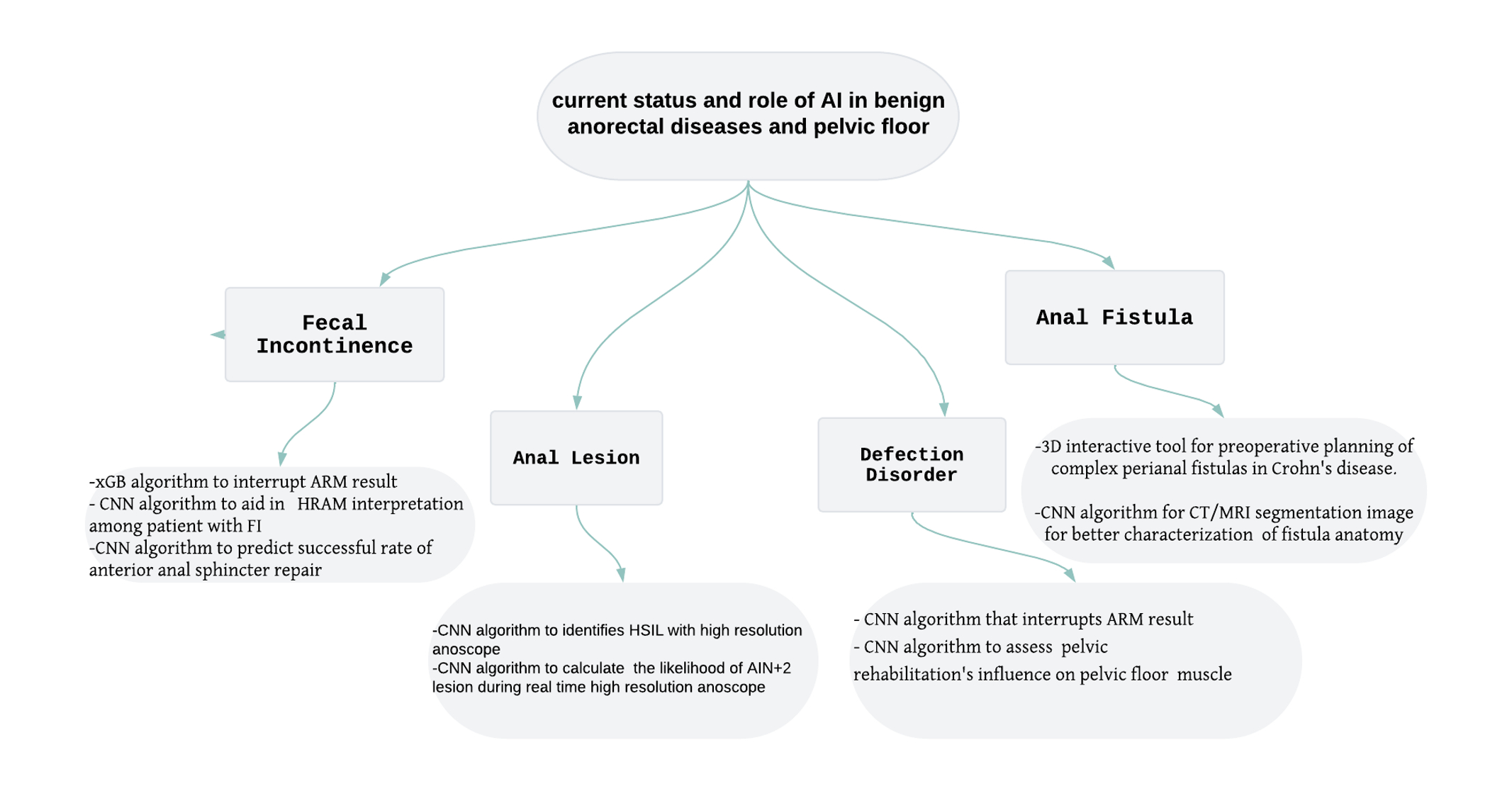Background:
Anorectal diseases and pelvic floor disorders are prevalent among the general population. patients may present with overlapping symptoms, which might delay the accurate diagnosis, resulting in a substantial effect on their quality of life. Treating physicians encounter numerous challenges attributed to the complex nature of pelvic anatomy, the limitation of diagnostic techniques, and a lack of available resources. The utilization of artificial intelligence (AI) possesses significant potential in enhancing the current medical practice. This article aims to provide an overview of the current state of AI in tackling the aforementioned difficulties, specifically in the context of managing benign anorectal disorders and pelvic floor disorders.
Methoid:
A systematic literature review was performed according to the Preferred Reporting Items for Systematic Reviews and Meta-Analyses (PRISMA) guidelines. We searched the PubMed database to identify all potentially relevant studies published from January 2000 to August 2023. Search queries were built using a combination of the following terms: artificial intelligence, AI, machine learning, deep learning, benign anorectal disease, pelvic floor disorder, fecal incontinence, obstructive defection, anal fistula, rectal prolapse, and anorectal manometry Our inclusion criteria were any article with AI modules written in English. Exclusion criteria were abstract-based articles, and articles describing malignant anorectal conditions. Data from selected articles were extracted and reviewed.
Results:
An initial literature search generated 139 articles, but only 16 articles matched our inclusion and exclusion criteria. All articles were retrospective; All reviewed article was retrospective single-center study. The most common AI module used in the reviewed articles is the convolution neural network (CNN). The AI modules were used to optimize imaging studies for the anatomy of the pelvic, fistula and abscess location, facilitate the interpretation of anorectal manometry, and support surgical decisions in the treatment of complex anal fistula. (AI) has great potential as a valuable tool for the diagnosis of high-risk lesions in high-resolution anal anoscope. None of the AI modules were externally validated.
Conclusion:
AI has the potential to enhance the diagnosis and management of anorectal and pelvic floor disease. Multicentric collaboration is required in order to improve the data flow for machine learning. More challenges need to be addressed by surgeons and gastroenterologists for future research projects

Current status and role of AI in benign anorectal diseases and pelvic floor disorders.
The flowchart provides a concise overview of the artificial intelligence subjects investigated in the context of diagnosing and managing benign anorectal illness and pelvic floor diseases.